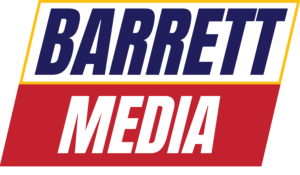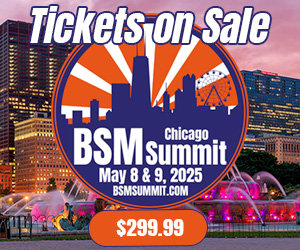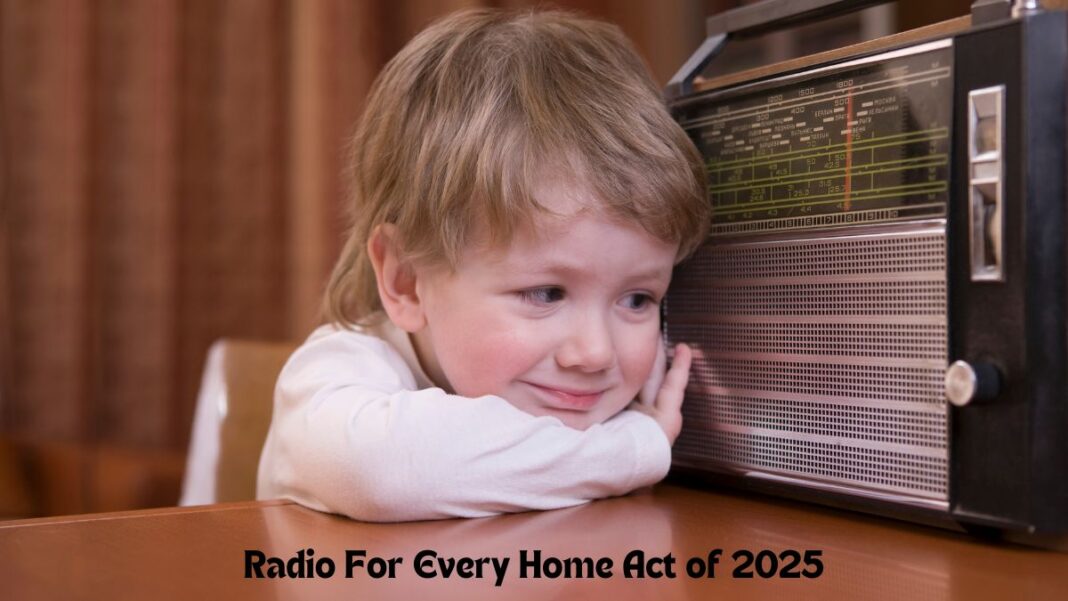John Lund is President of the Reno-based Lund Media Group. Lund leads a team of programming specialists nationwide that provides consulting and research to radio stations in markets of all sizes.
For over 30 years, the Lund team has provided consulting and research to radio stations (all formats), TV stations, and broadcast networks, as well as research and consulting for American Forces Radio and Television stations worldwide.
Lund frequently speaks at broadcast meetings, state and national broadcast conventions, including NAB and NPR, and corporate meetings. He publishes The Lund Letter, a weekly e-newsletter read by over 13,000 broadcasters, the most-read media management and radio programming newsletter worldwide.
He is this week’s featured consultant.
Jeff Lynn: What is the state of the radio industry today?
John Lund: The radio industry remains resilient, adapting to digital transformation through streaming and podcasting. While traditional AM/FM radio maintains a broad reach, especially in cars, it faces challenges from online platforms, but local stations retain strong community ties.
Radio is crucial for community engagement and news. 92% of Americans still listen to terrestrial radio today.
Lynn: Your website has an article entitled “The Magic of Localization.” Can you share your thoughts on the subject?
Lund: Sounding local is easy. But now, with digital automation, satellite programming, syndicated shows, and out-of-market voice tracking, many stations sound less local. With the right guidance, this can be a win-win situation for the station and the audience.
Claiming a local identity can be accomplished with a little know-how and ingenuity beyond imaging liners and nationally show-prepped talent bits.
+ Source the localisms. Create a timely events calendar that lists what’s happening and other local attractions/activities for talents to use on their shows.
+ Establish a quota system so every talent delivers two or three localisms an hour.
Talents should prep what’s happening locally, something fun or interesting to see or do today, tonight, or this weekend. Timely localisms help connect the station with the audience. This benefit of radio differentiates us from XM-Sirius, iTunes, or Apple Music.
Lynn: You also have an article entitled “AI Can Help You Localization.” AI is a subject I have talked to a lot of people about. What are your thoughts?
Lund: Artificial Intelligence (AI) can add great value to your station in many ways. This technology can help us improve and streamline day-to-day activities.
Local News and Weather Updates. AI can automatically gather and summarize news and weather information from various sources. Weather can be delivered for specific Zip Codes and communities, ensuring timely and relevant updates.
Imaging Voices & Production. AI software can provide voice imaging and “listener” voices that endorse the station. It can generate the perfect voice for your station commercial production with or without an accent.
Back-Announcing Songs. AI’s synthetic voices can be used for back-announcing songs.
Voice Recognition and Synthesis. AI can transcribe and analyze spoken content, such as listener requests or live commercials, to send to clients.
Social Media Integration. AI can respond instantly to Facebook posts and questions. It can also automatically post updates and engage with the audience.
Interactive Features. AI can enable interactive features like song requests, polls, and contests, enhancing listener engagement.
By leveraging these AI capabilities, radio stations can provide their audience with a more personalized, engaging, and efficient listening experience.
Lynn: What principles do winning radio stations have in common?
Lund: Lund Media conducted a national study of the top-rated stations in America. Regardless of music format, we found three important elements in virtually all successful radio stations. These three essential ingredients comprise successful programming that shapes the station’s DNA makeup.
In programming, the 3-M’s — Music, Mornings, and Marketing – should be the triangular focus of the program department. Prioritize activities, concentrate on the strategic goals, and “hit on results.”
The three M’s to making successful radio stations are:
1. Music: Play the best-researched music perfectly scheduled that resonates with your target audience. Understanding listener preferences and delivering a unique, consistent sound keeps people tuning in.
2. Mornings: The top stations all possess the best-known, well-executed morning shows that are fun and funny. These shows anchor the station’s programming. When you win an audience in the morning, you win all day.
3. Marketing: The station is effectively marketed externally and internally. Market externally to get tune-in and market internally to extend TSL. Constantly build cume and tune-in through External Marketing—utilize all media, including social media, texting, and emailing. Internal Marketing helps you win the Usage War and increase listening occasions. Get the audience to “use” the station after the break, in the next hour, daypart, and day. Strong branding and outreach help build listener loyalty and attract new audiences.
Keep the energy and engagement high with fresh content, dynamic personalities, timely imaging, and promotions. Consistently evolving and adapting to trends helps maintain excitement and long-term success.
You need to win one of the 3 M’s to have hope. Two ticks, and you’re likely a pretty good station. Win all three, and you are THE market leader.
Lynn: How should talent approach prep and shows when they do shifts on multiple stations in the same cluster?
Lund: Understand Each Station’s Audience: DJs must familiarize themselves with each station’s demos, format, and presentation to adapt their content accordingly.
Content Planning: Tap multiple sources, not just a prep service. Reuse core prep content but modify the set-up, delivery, and angle to fit the station’s brand and listener expectations.
Focus on Localization: Talk about what affects the listeners – the new Trader Joe’s, Aldi’s, dog park, and local happenings.
Cross-Promotion: Take advantage of the cluster’s network to cross-promote relevant content or upcoming shows across different stations to maximize listener engagement.
By staying organized and adaptable, talents can maintain high-quality, engaging shows for each station without overwhelming themselves.
Lynn: What tips do you have for keeping station imaging fresh and timely?
Lund: This requires creativity, regular updates, and strategic planning.
Topical References: Keep imaging aligned with timely events like concerts, holidays, and local events to stay relevant and closely connected to the community and audience.
Audience Feedback and Trends: Stay attuned to listener feedback and trends in music, pop culture, and media to ensure that imagery resonates with the audience’s current tastes.
Rotate Content: Regularly update imaging elements like sweepers, promos, and liners to avoid listener fatigue. Keep a bank of imaging pieces to change out frequently.
Creative Production Techniques: Use modern production tools and sound effects to enhance imaging, making it more dynamic and engaging.
Collaborate with On-Air Talent: Get input from on-air personalities, as their involvement can make imaging sound more integrated and authentic to the overall station sound.
Stations can maintain a vibrant and engaging presence by constantly refreshing imaging and staying attuned to the station’s evolving sound and audience.
Lynn: What tips can you offer for show brand extension into video and podcasting?
Lund: Extend the talent and station brand into video and podcasting by leveraging one’s on-air personality and audience connection. In video, offer behind-the-scenes content, interviews, or vlogs, allowing listeners to see a more personal side. Podcasts provide a space for deeper conversations, niche topics, or extended versions of on-air content. Consistency in tone, humor, and style across platforms helps maintain brand identity. Cross-promotion on social media and on-air can drive listeners to these new platforms, enhancing engagement and expanding the DJ’s reach beyond traditional radio.
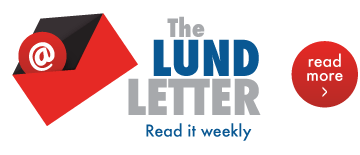
Lynn: How much importance do you place on a social media strategy?
Lund: A strong social media strategy is crucial for radio stations to engage listeners beyond the airwaves. It boosts brand visibility, promotes on-air content, and fosters real-time interaction. Social media extends the station’s reach, especially to younger, digital-savvy audiences, driving tune-ins and enhancing listener loyalty. Platforms like Instagram, Twitter, and Facebook allow for cross-promotion, event updates, and audience feedback, creating a more dynamic connection. A well-executed strategy also helps promote contests, podcasts, and live shows, keeping the station relevant in an increasingly competitive media landscape.
Lynn: What was the best career advice you were ever given?
Lund: I’ve had many mentors. The best career advice is to pursue what aligns with your passions and strengths while being open to growth and learning. Focus on building relationships, as networking is key to opportunities. Stay adaptable—embrace change and evolve quickly with new trends and skills. Consistently deliver value and take initiative, showing reliability and creativity. Balance ambition with patience—success takes time, but persistence and resilience will guide you toward your long-term goals.
I was also told that the day nothing turns you on in radio, you’re dead, no matter how many years you keep breathing. And: To work with such intensity that to the rest of the world, it seems like insanity.
Connect with John Lund by email here. Visit the website at Lund Media Group.
Or: Lund Media Group
748 S Meadows Pkwy, A9-331
Reno, NV 89521
650.692.7777
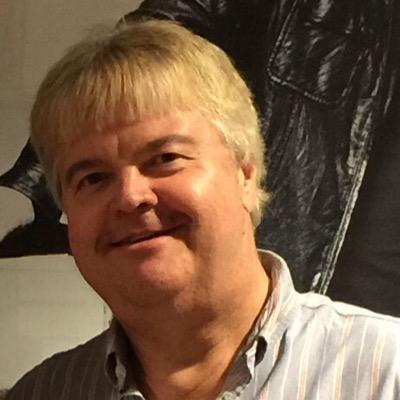
Jeff Lynn serves as Editor of Barrett Media’s Music Radio coverage. Prior to joining Barrett Media, Jeff spent time programming in Milwaukee, Omaha, Cleveland, Des Moines, and Madison for multiple radio groups, including iHeartMedia, Townsquare Media, NRG Media, and Entercom (now Audacy). He also worked as a Country Format Editor for All Access until the outlet shut down in August 2023.
To get in touch with Jeff by email, reach him at Jeff@BarrettMedia.com.
